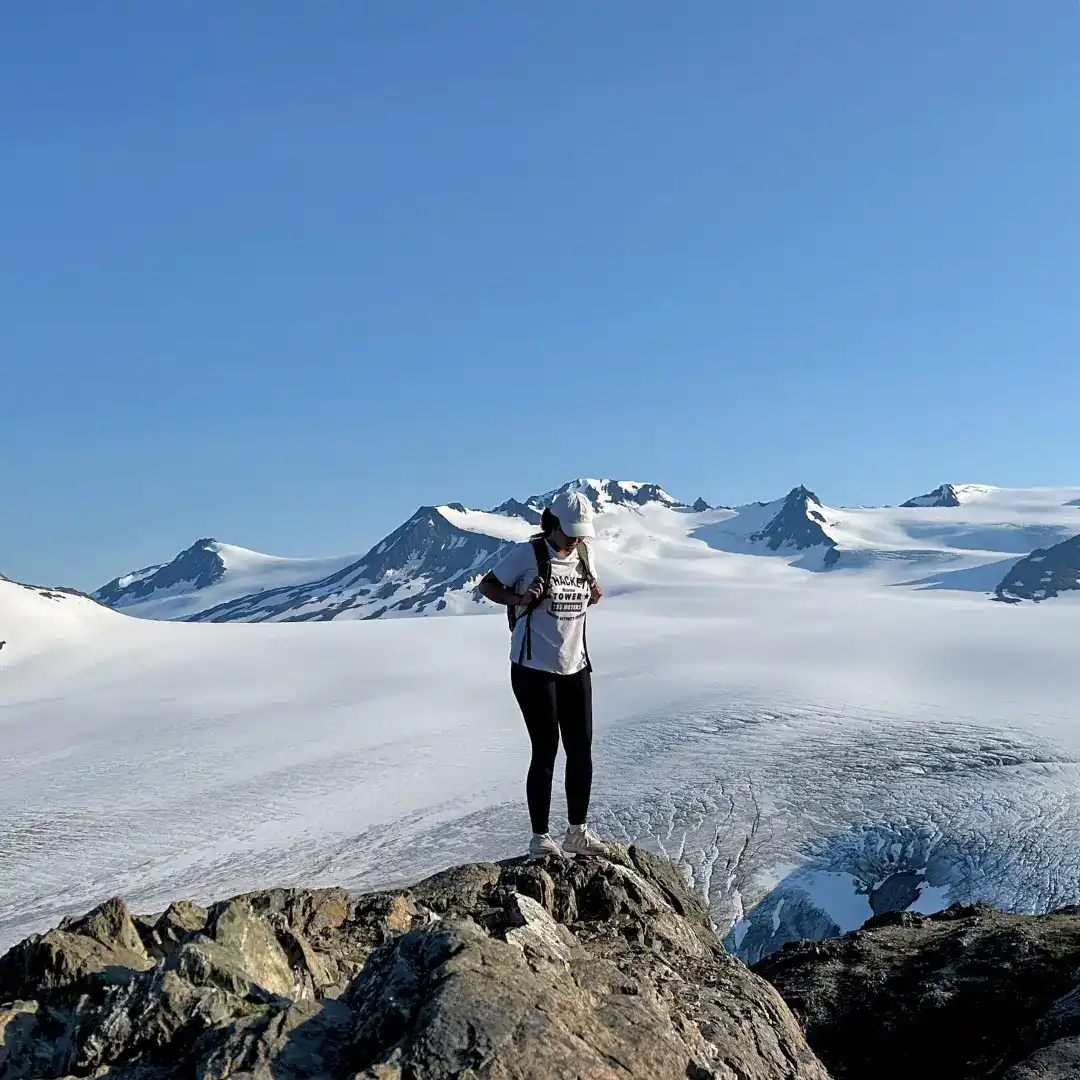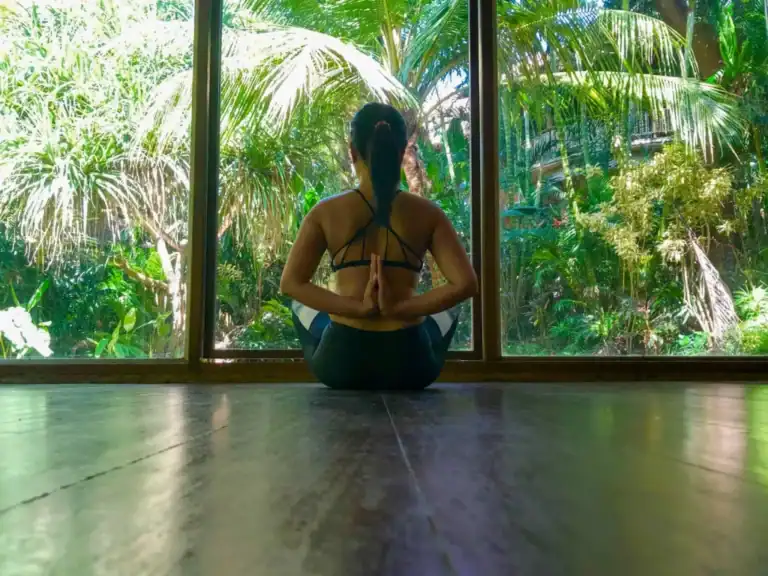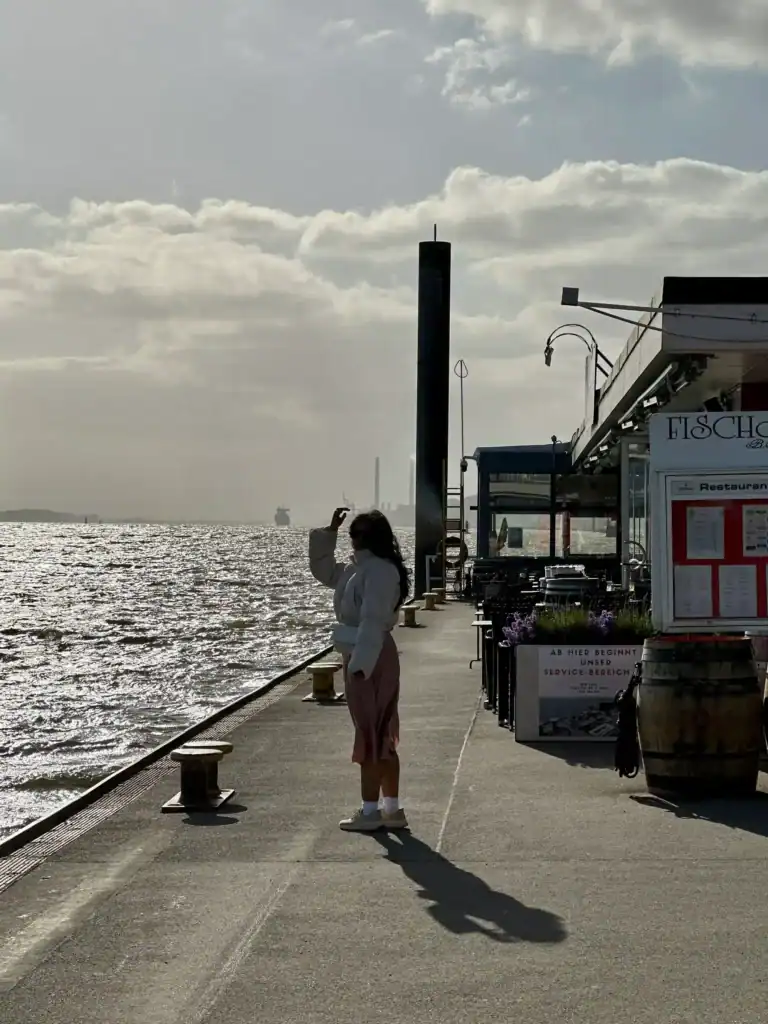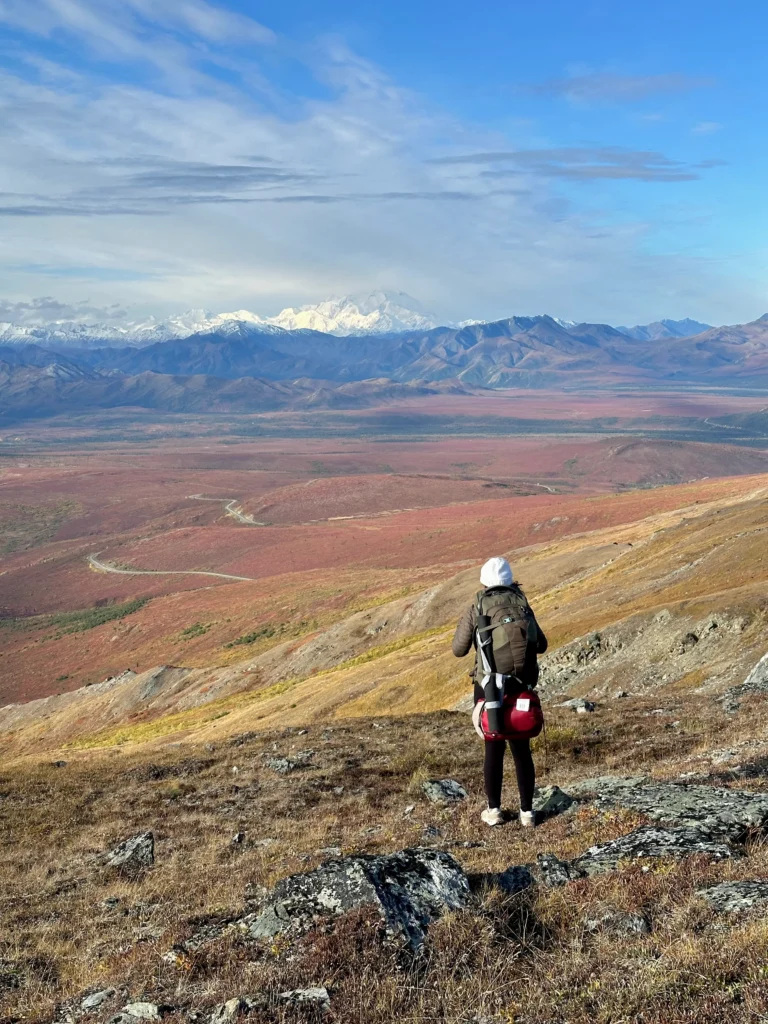What Is Work Exchange and How Does It Really Work?
When people ask how I afford to travel full-time, they’re usually surprised by the answer: I volunteer. In exchange for a few hours of help each day, I get free accommodation—and sometimes meals, tours, and life-changing experiences. That’s the magic of work exchange.
Before my first one, I was terrified. Thanks to my boyfriend’s love of true crime, I half-believed I’d end up kidnapped—or worse. But fast forward to today: I’ve completed eight work exchanges over the last five years in the U.S., Turkey, Jordan, and Greece. And I can confidently say it’s completely changed the way I travel.
I’ll never forget Alaska. I was volunteering at a small inn when I scored a $200 glacier cruise for just $20. We saw puffins, bald eagles, and whales. I turned to a fellow volunteer and laughed, “This is why we clean toilets.” That joke stayed with us for the rest of the trip—and honestly, it still rings true.
If you’re a traveler searching for something more than just a vacation, this might be exactly what you’ve been looking for. In this post, I’ll explain what is work exchange, how it actually works, how to find opportunities, what a typical day looks like, and how to know if it’s right for you—so you can get started on your own without feeling lost.

Disclosure: This page contains affiliate links at no extra cost to you. Learn more.
What Is Work Exchange?
Work exchange is a way to travel where you offer a few hours of help each day in exchange for free accommodation —often with meals, local tours, or other perks included. It’s a popular way for travelers to explore the world more affordably and meaningfully.
It’s also called work in exchange for room and board, volunteerism, or work travel. But the core idea is this: your time and skills are your currency.
I first discovered it back in February 2024, shortly after quitting my job to travel full-time. I had some savings and investments, but I didn’t want to burn through all of it just to return home broke and job-hunting. So I started searching for ways to travel the world on a budget—and that’s when I stumbled into the world of work exchange.
At first, I thought it was just about saving money. But after a few months, I realized it offered something even more valuable: connection. Volunteering allowed me to live with locals, get to know communities beyond the surface, and stay in places long enough to feel at home. I wasn’t just visiting anymore—I was participating.
People sometimes assume it’s just free labor, or that you’ll be stuck sleeping on a couch in a rundown building. That hasn’t been my experience at all. I’ve stayed in mountain yurts, farmhouses, and beautiful apartments. And one of the coolest volunteers I met was in Colorado—a 60-year-old woman from the U.S. who was doing the exact same thing I was. This kind of travel isn’t just for twenty-something backpackers; it’s for anyone looking to explore the world with purpose.
And yes, sometimes you’ll find yourself scrubbing toilets or cleaning rooms. But when you’re doing it in exchange for glacier cruises, morning desert hikes, or simply a warm bed in a new country, it’s more than worth it. As I like to joke with other volunteers: “This is why we clean toilets.”


How Work Exchange Works
At its core, work exchange is a mutually beneficial arrangement. You help a host with a few hours of work each day—doing something you’re good at or interested in (if you did the application right)—and in return, you get a free place to stay (often with meals or extra perks). But when done right, it’s much more than just a trade.
You’re not just working—you’re contributing to something meaningful. Many hosts are small businesses or local families who can’t afford to hire full-time staff due to the seasonal nature of their work. You step in at just the right time, and they often return the favor with local insights and experiences you’d never find in a guidebook.
I’ve had exchanges that felt like true collaborations. In Alaska, for example, I helped an inn during their busiest season—and in return, I got access to things I’d never have been able to afford on my own: glacier cruises, deep sea fishing, and even a chance to see Northern Lights.
It reminded me of how community used to work—before everything became transactional. Like in the old days, when neighbors traded help and their own produce instead of invoices.
Who Offers Work Exchange?
You’d be surprised by the variety of people and places offering work exchange. I’ve volunteered at hostels, cave hotels, farms, yurts, and even tents in the desert. Hosts range from local families to solo entrepreneurs and small business owners trying to keep things running without a full-time team.
One host I’ll never forget was a 25-year-old woman running two hotels in Turkey. Watching her hustle, problem-solve, and manage a team reminded me of my own startup days. It showed me that work exchange isn’t just about travel—it’s about connecting with people you’d never otherwise meet.
Common hosts include:
- Hostel, Guesthouse & Camping
- Homestays
- Farm & Permaculture sites
- Content Creation
- Yoga Studios and Retreat Centers
- Surf Schools
- Monasteries
- Child, Elderly, or Pet Care
I’ve compiled a comprehensive list of different types of volunteering opportunities on Worldpackers—along with my personal experiences (the good, the bad, and the challenging)—to help you determine which one might be the best fit for you.
Each one offers a different experience, but the best ones treat you like a teammate—not just a temporary helper.
What Kind of Help Can You Offer?
One of the best things about work exchange is how flexible and beginner-friendly it can be. Over the past year, I’ve done everything from cleaning and reception work to gardening, dog sitting, taking care of horses, social media, and even guiding hikes.


Don’t worry if you don’t have special skills—tasks like cleaning, gardening, and basic help are usually all you need to get started. But if you do have specific talents to offer, you can apply to opportunities with less competition and fewer or more flexible work hours. I’ve met volunteers who painted murals, taught yoga classes, or helped design websites.
Whether you’re creative, hands-on, or simply enthusiastic, there’s almost always a way to contribute. Your skills can open doors to opportunities you didn’t even know existed.
What You Get in a Work Exchange
Of course, the main benefit is free accommodation in exchange for work—but that’s just the beginning. Many hosts also offer meals, local tours, or special experiences as part of the deal.
I’ve had hosts cook family-style dinners, take me on hikes, and even treat me to a meal at a restaurant. One of my favorites? A host once brought me to a concert of an international artist!
But the real magic often comes in less tangible forms: friendships, cultural immersion, and confidence. I’ve made local friends I still keep in touch with, and I’m even planning to host some of my past hosts in the Philippines someday.


Other common perks include:
- Shared Meals or Groceries
- Free Use of Kitchen
- Free or Discount on Local tours
- Free or Discount on Events
- Free or Discount on Parties
- Free Pickup
- Free Laundry
- Fast Internet Access
- Yoga Classes
- Holistic Therapies
- Cooking Lessons
- Language exchange
- Lifelong connections
What’s NOT Included
It’s important to be realistic: work exchange isn’t an all-expenses-paid trip. You’re getting a free place to stay—but you’ll likely need to cover your own transportation, flights, and personal expenses.
In some placements, like ones I did in Greece and the U.S., I had to buy my own food. Others offered groceries or shared meals. It all depends on the host—which is why it’s so important to read the listing carefully and ask questions before you go.
Here’s what’s usually not included:
- Flights
- Visa fees
- Travel insurance
- Transportation during your stay (you’ll often rely on walking, biking, public transport or even hitchhiking)
- Personal expenses
Normally, most platforms like Worldpackers or Workaway clearly list what’s included.
But I’ve learned to always double-check and ask these questions before you confirm your volunteering—especially when volunteering in remote areas where groceries or buses aren’t as accessible.
Work Arrangements: What to Expect
Work exchange isn’t a job—it’s a collaboration. But like any good partnership, it comes with expectations. Most hosts outline the hours and type of help you’ll be providing, but the specifics of your schedule can vary depending on the type of host.
For hostels and hotels, the setup is usually clear: 4–5 hours of help per day with 1–2 days off each week. Tasks are often structured and scheduled—like working reception, making beds, or helping with check-ins. Personally, I prefer working with hostels and hotels because of this structure.
In homestays, farms, or tents, things are more flexible. You might work just 2–3 hours a day without a formal day off, but the vibe is more relaxed. It’s less about punching a clock and more about pitching in where needed.
However, when you live with your host, it can blur the line between “on duty” and just helping out. You might find yourself washing dishes after dinner or weeding the garden simply because you’re there. Hosts don’t always expect it—but it’s part of that give-and-take community spirit that makes work exchange so special.


One thing to note: most hosts also have a minimum stay requirement. For actual businesses like hotels and inns, it’s often at least 4 weeks, while homestays and farms usually ask for 5 days to 2 weeks. This helps you learn the ropes and gives the host consistency—they don’t want to train someone new every few days.
When it comes to platforms, I generally prefer Worldpackers, but Workaway has a slight advantage here: they cap the workload at 25 hours per week, while Worldpackers allows up to 32. It’s a small but important difference if you’re trying to balance volunteering with sightseeing, remote work, or just time to recharge.
If you want to take a day off to explore or attend a local event, most hosts are happy to accommodate—as long as you communicate clearly. I’ve adjusted schedules last-minute and it’s rarely been a problem.
Most of the time, expectations are agreed upon in advance, but life happens. One time in Athens, my host had a sudden infestation in her house, so we had to rework the schedule entirely. Flexibility, communication, and a sense of humor go a long way.
🤩 Use my link or code GLADIS to get $10 off your Worldpackers membership. You’ll unlock full access to all hosts, free travel courses, and 24/7 support — all for less than the price of one hotel night.
What Are the Requirements for a Work Exchange?
One of the best things about work exchange is how accessible it is.
On Worldpackers, anyone 18 or older can join—and there’s no upper age limit. In fact, I once volunteered with a 60-year-old woman in Colorado.
Workaway even allows kids under 18 to be included in their parents’ account, and I once met a whole family volunteering together in Alaska.
What about visas?
This is where it gets a bit tricky. Technically, you’re not being paid, so many volunteers use a tourist visa. But some countries (like the U.S.) have stricter rules and may require a cultural exchange visa like a J-1 or Q visa—even if you’re just receiving accommodation in exchange for work.
Most volunteers I met—including myself—simply use a tourist visa. But here’s my honest advice: check the entry requirements for each country carefully, and avoid using the word “work” at immigration. Say you’re traveling—because even unpaid “work” can raise red flags with immigration officers.
You don’t need documents or certifications to join most platforms, though they’ll usually remind you to check local visa rules when applying to hosts in specific countries.
Do I need to speak the local language?
In my experience, basic English is enough. All of my hosts spoke English, and when there were gaps, Google Translate saved the day. Language has never been a barrier—it’s actually been part of the adventure.
Do I need equipment or experience?
For most work exchange opportunities, you don’t need prior experience or fancy gear to get started. But some specific roles may require basic experience, certifications, or your own equipment.
If you’re applying for digital tasks—like social media, blogging, or website help—it’s helpful to have your own laptop, phone, or camera. Hosts won’t always require them, but having the right tools can make your application more appealing and your tasks easier to complete.
As for experience, most roles are beginner-friendly. You’ll see plenty of listings for cleaning, gardening, reception work, or general help that don’t require any background at all.
If you do have experience in areas like yoga teaching, photography, childcare, or graphic design, it can open up even more interesting and flexible opportunities. However, because of the sensitive nature of certain roles—like yoga instruction or surf coaching—hosts may require certifications.
Start with what you have. Be honest about your skills, and stay open to learning. You might be surprised by how much you already bring to the table.
What makes a good volunteer?
You don’t need special skills, but you do need the right mindset. Here’s what I’ve found matters most:
- Responsibility: Show up and follow through on what you agreed.
- Open-mindedness: You’re in someone else’s space and culture—stay curious and respectful.
- Willingness to help: Go beyond the task list when you can.
- Flexibility: Things change. That’s part of the beauty.
- Good communication: Be clear, honest, and respectful.
- Curiosity: Ask questions and stay interested in the work you’re doing.
- Positive attitude: Approach each day with enthusiasm, even when tasks are simple.
- Social—but independent: Be friendly and open to connection, while also knowing how to manage your time and space respectfully.
But Is It Really Free?
One of the most common questions I get is: “Wait… is it actually free?”
The answer: mostly, yes—but not entirely.
While accommodation is covered, you’ll often still pay for food, transportation, and personal expenses. For example, I’ve had placements where I bought my own groceries and paid for local buses. It’s not a huge cost, but it adds up—especially if you’re volunteering in remote areas.
Also, not every exchange feels equally “fair.” I once stayed in a hostel where volunteers were doing hours of housekeeping duties for a bed that normally cost just $12 per night. I personally didn’t mind—I was only there for two nights in exchange for creating two Instagram reels. But if I were staying longer, I might’ve felt differently.
And let’s be clear: you do have to work.
It might look like a dream online, but I’ve had moments where I finished a 17-hour hike (bucket list experience!) only to wake up at 8 a.m. the next morning for my volunteer shift. So no—it’s not just free travel. You earn what you get.
But for long-term travelers like me, it’s so worth it.
In fact, I spent an entire year volunteering across four countries—and I’d absolutely do it again.
Is Work Exchange Safe?
If you’re feeling nervous about your first work exchange, that’s completely normal—I was too. But now, after volunteering solo in several countries, I can confidently say that while there are risks, it can be done safely with the right preparation.
I also once felt uncomfortable with a host who kept changing the schedule, making it hard for me to plan my days. I had to speak up, and fortunately, we were able to sort it out. Communication is key—even when it feels awkward.
Platforms like Worldpackers help a lot. They offer verified reviews, and features like WP Safeguard and Host Response Guarantee, which can even cover alternative accommodations if something goes wrong. I talk more about those protections in this article.
If you need more reassurance, you can always apply for travel insurance. I can vouch for SafetyWing’s Nomad Insurance when volunteering abroad since it covers medical needs and travel hiccups, such as delays or lost luggage.
No matter which option you choose, here are my top safety tips:
- Confirm everything through the platform, so there’s a written record
- Let someone know where you are—especially when traveling solo
- Familiarize yourself with local transport and get an eSIM (it’s a lifesaver!)
- Trust your gut—it’s your best safety tool
After traveling to 35+ countries, I now prefer using Airalo’s eSIM for its easy setup, fair pricing, and instant top-ups.
- Get 15% off new users with code GLADIS15
- Get 10% off existing users and top ups with code GLADIS10
How to Avoid Bad Hosts
To be honest, I’ve been lucky. Most of my hosts have been fair and kind. But that doesn’t mean I haven’t heard stories—or noticed red flags along the way.
I’ve met managers who were oddly controlling, or avoided conflict to the point that all the volunteers suffered. One host was so obsessive about cleanliness that nothing ever felt good enough—no matter how hard I tried.
Now, I look out for signs that a host might not be a good fit:
- Vague or overly short descriptions
- No recent reviews (or only outdated ones)
- All 5-star reviews with no details
- Photos that don’t match the vibe
- “Flexible hours” with no structure
- Poor communication
- No clear exchange terms
- A gut feeling that something’s off

What I ask before confirming a host:
- What exactly will I be doing each day?
- How many hours/days off?
- Are meals or groceries included?
- Will there be other volunteers?
- How do I get to you?
- Is pickup available?
- What’s the Wi-Fi like?
I’ve only left one placement early. The tension with the manager kept building, and several volunteers had already left. I knew it wasn’t worth staying.
Pro Tip: Unexpected situations happen, even with the best planning. I keep SafetyWing Nomad Insurance active during volunteer projects—it’s flexible, affordable, and lets me extend coverage as I move between countries.
Volunteering and Work Exchange Platforms
I’ve used both Worldpackers and Workaway, and each has its strengths. These days, I mostly use Worldpackers—especially when I’m in a new region or trying a new kind of exchange.
Worldpackers
✅ Great for beginners
✅ Easy-to-use interface
✅ Clear expectations and structured listings
✅ Insurance and platform support (like WP Safeguard)
✅ Encourages cultural exchange and non-paid roles
Workaway
✅ More host options worldwide
✅ Lower time commitment (max 25 hours/week vs 32 for Worldpackers)
✅ Some paid opportunities
✅ Better for experienced travelers or those looking to go off-grid
If you’re just getting started, I recommend Worldpackers. It’s more beginner-friendly, with structured listings and solid platform support. You’ll know what to expect—even if you don’t know what to ask yet.
If you’re a seasoned traveler and want more remote, independent options, Workaway might suite you better. Just know that with more freedom comes more responsibility—you’ll need to do more of the groundwork yourself.
My First Work Exchange Experience
My first ever work exchange was in Alaska, in August 2024, at a yurt village surrounded by mountains, glaciers, and beaches. I was doing housekeeping—but honestly? I felt like the luckiest person on earth.
I remember riding the most scenic train in Alaska, wide-eyed as I spotted bald eagles, moose, and even bears from the window. I was so excited. I had a list of all the things I wanted to do—and I ended up doing all of them: glacier helicopter rides, ice hiking, deep sea fishing, and a glacier cruise.
I worked the morning shift from 11 a.m. to 3 p.m., and after lunch, we’d head straight out for hikes or other epic adventures. I still can’t believe I got a dinner cruise for $20, a glacier helicopter ride for $50, and ice hiking for just $35!


Of course, it wasn’t all perfect (though it came pretty close). We had an oddly controlling manager, and one of the volunteers left. I ended up leaving a week early as well. But even with the tough moments, I felt grateful—for the adventure, the people I met, and the freedom to live this kind of life.
I’ll never forget one moment: we were on the cruise, watching humpback whales, and I turned to my co-volunteer. We looked at each other and laughed:
“This is why we clean toilets.”
It became our mantra for the trip—and it still makes me smile.
I did a full year of volunteering after that, across three continents, from yurt villages and cave hotels to backpacker hostels, farm ranches, desert tents, and homestays. Each one had its own rhythm and rewards. Sharing these stories helps you get a clearer idea of which kind of experience might fit you best.
Is Work Exchange Worth It?
Yes. A thousand times yes.
Thanks to work exchange, I’ve been able to travel full-time without burning through my savings. But more than that, it’s given me meaningful connections, confidence, and life-changing experiences I wouldn’t trade for anything.
That said, it’s not always smooth. I’ve cried over misunderstandings with co-volunteers. I’ve questioned my life choices over too many pancakes and late night shifts. But every time I’ve asked myself why am I doing this, I always return to the same answer:
Because it’s worth it.
If you’re a long-term traveler, someone on a gap year, or just craving something deeper than hotel hopping—yes, this is absolutely for you.

Is Work Exchange Right For You?
Work exchange isn’t for everyone—and that’s okay.
It’s perfect for the slow traveler, the soul searcher, the nature lover, the budget traveler, the creative needing a break, and the human connection junkie. It’s for people in transition. People who want something different from the 9-to-5 grind. People who believe travel is more than just sightseeing.
But it’s not for everyone.
If you’re a luxury traveler, need total control over your time, or get easily frustrated when things aren’t perfect, this might drive you a little mad. The same goes for those who avoid helping out or can’t go a day without their usual routine.
In short, if you value:
- Slow living over fast travel
- Experience over checklists
- Growth and connection over comfort
- Simple joys and unexpected moments
…then this might be exactly what you’ve been looking for.
How to Start Your First Work Exchange
If you’ve made it this far, there’s a good chance this is calling to you.
Maybe you’re craving more connection. Maybe you want to travel deeper, slower, and more meaningfully. Maybe you’re just ready for something different.
If that’s you—start with Worldpackers. I recommend it to anyone new to work exchange because of its beginner-friendly platform, clear expectations, and built-in safety support.
🤩 Use my link or code GLADIS to get $10 off your Worldpackers membership. You’ll unlock full access to all hosts, free travel courses, and 24/7 support — all for less than the price of one hotel night.
How to start volunteering:
1. Explore platforms and opportunities.
Check out platforms like Worldpackers and Workaway to see what’s available. Browse through the host listings, and get a feel for what kind of experiences are out there. If it feels like there’s a fit—sign up and create your profile.
2. Get clear on what matters most to you.
Cultural immersion? Free time? A specific location? Knowing this will help you narrow your search and focus on the right hosts.
3. Use filters and wishlist features.
Once you know what you want, use the platform filters and save promising hosts to your wishlist (just tap the heart!).

4. Write thoughtful, personalized applications.
- Introduce yourself like a real person
- Highlight your strengths and relevant experience
- Show flexibility, warmth, and curiosity
- Ask a thoughtful question or two
- End with gratitude and good energy
Pro tip: Confirm everything inside the platform app, even if you also chat via WhatsApp or Zoom. It keeps things clear—and gives you backup if anything goes off track.
5. Know your non-negotiables.
Before accepting a host, ask yourself: What do I truly need from this experience? Knowing your must-haves makes choosing the right host so much easier.
Your next adventure could start with one message. Don’t wait until “someday.”
If your gut says yes—start today. You’ve got this. Get started on Worldpackers here.






